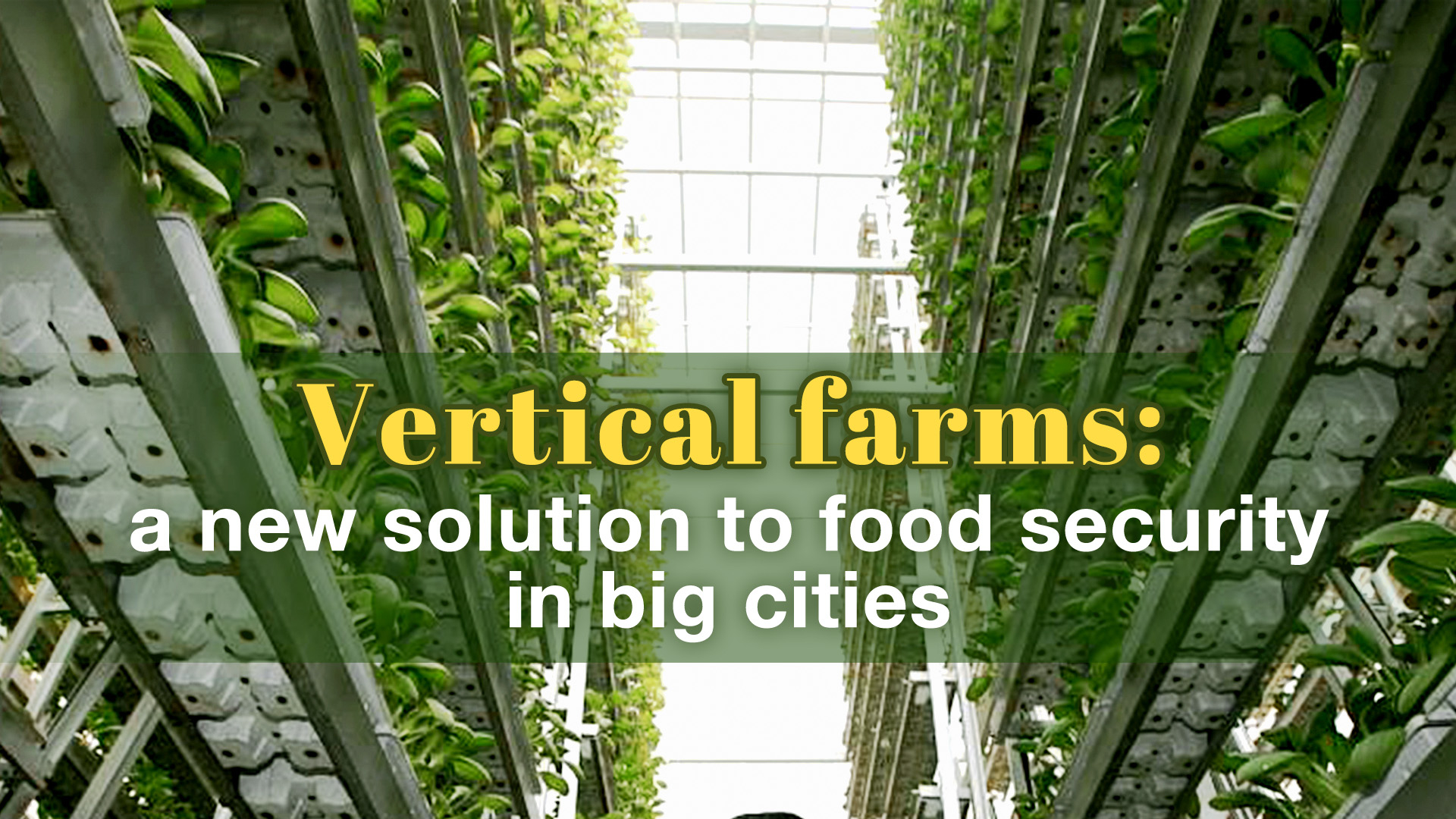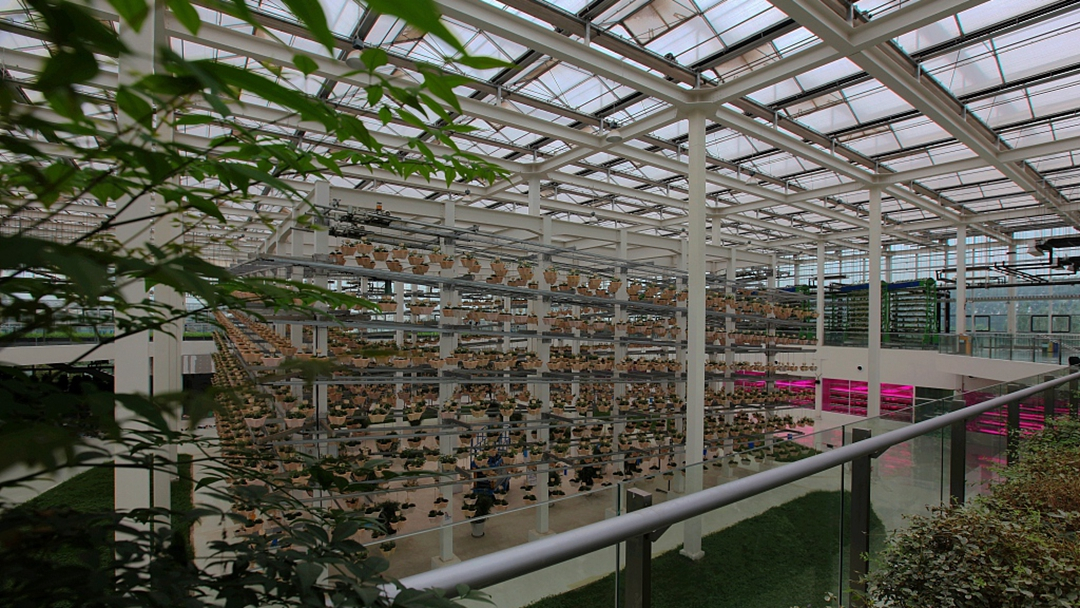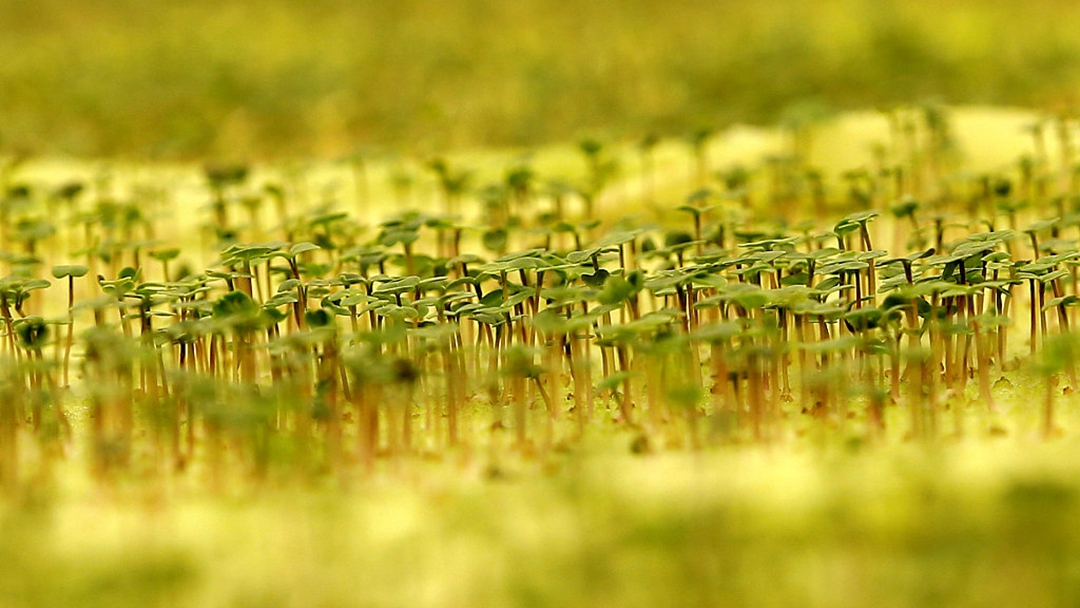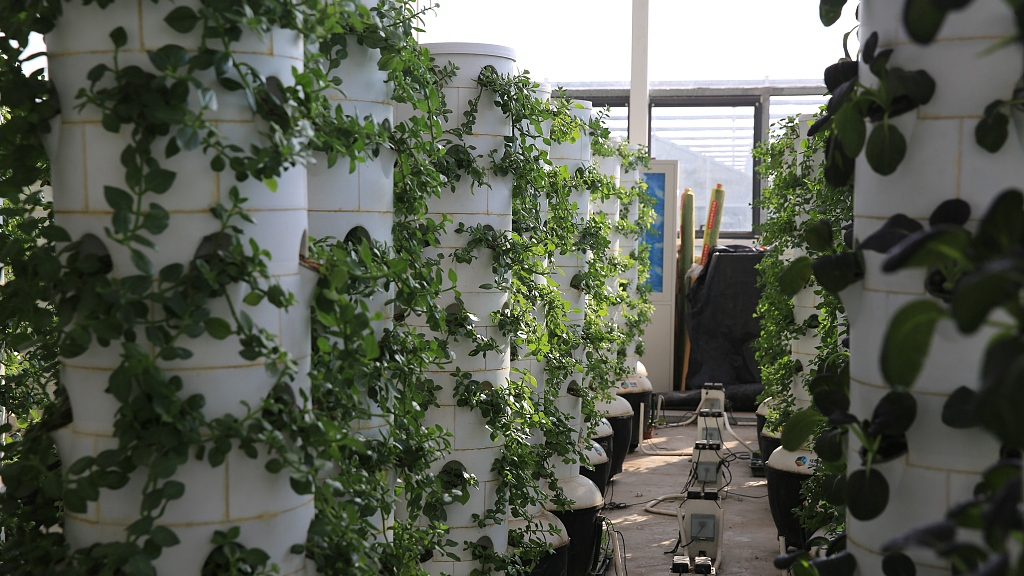02:48

For most urbanites, food on their dining table comes from rural areas. But a new farming technology is burgeoning that enables urban residents to grow vegetables and crops by themselves. Vertical farming allows greens and other crops to be cultivated indoor in stacked layers and other vertical structures.

Inside a vertical farm in Beijing./VCG Photo
Inside a vertical farm in Beijing./VCG Photo
Why is vertical farm attractive?
The Food and Agriculture Organization of the United Nations (FAO) forecasts that global population will reach 9.7 billion by 2050. To feed so many people, global food production needs to be improved by 70 percent.
At the same time, the urbanization process is accelerating and bringing more people into cities. The FAO estimates that global urban population will increase by another 2.5 billion by 2050, accounting for two-thirds of the total population. That also means there will be less arable land.
With food demand going up and agricultural land shrinking, vertical farming seems like an optional solution.
Compared with conventional farming, the most remarkable feature of vertical farming is that it allows food to grow in smaller spaces without soil and natural light throughout the year.
The controlled environment inside vertical farms also means it won't be affected by adverse natural conditions that conventional farmlands often face, thus ensuring stable production.
In addition, indoor farms in cities will cut out the field-to-supermarket transport, which impacts the freshness of the produce.

Plants grow inside a vertical farm in Sweden./VCG Photo
Plants grow inside a vertical farm in Sweden./VCG Photo
Vertical farms in China
In China, urbanization is taking place at a rapid pace. According to a report by the National Academy of Economic Strategy under the Chinese Academy of Social Sciences, China will see an urbanization ratio of 70 percent by 2035. As a result, one billion Chinese people are expected to live and work in urban areas by that time.
Meanwhile, The world's most populous country only has seven percent of the world's arable land and six percent of global freshwater. But it has to feed 22 percent of the world's population.
Compared with the U.S., China has less than a third of arable land per person. Besides, soil retrogression and contamination are real headaches in the country.
Over the years, China has been able to maintain its bottom line of 1.2 million square kilometers of arable land, but maintaining food security is still a challenging task.

Inside a vertical farm in Beijing./VCG Photo
Inside a vertical farm in Beijing./VCG Photo
China National Cereals, Oils and Foodstuffs Corporation (COFCO), the country's largest food manufacturer, launched a high-tech vertical farm in a suburban area of Beijing in 2015, which is a demonstration of China's modern urban agriculture.
With an indoor farming area of more than 80,000 square meters, it adopts the highest level of modern agricultural techniques including artificial lighting, temperature control and hydroponic systems delivering nutrients to grow vegetables.
Plenty, a U.S. vertical farming startup that counts Amazon founder Jeff Bezos and Japanese tech player SoftBank among its backers, is ambitious about the Chinese market.
It plans to build at least 300 organic indoor farms in Chinese cities, starting from metropolitan hubs such as Beijing, Shanghai and Shenzhen, according to the company. Plenty started hiring and scouting for locations and distributors in these cities last year.
"We see a massive opportunity to get people a product that tastes better and also has health and safety that far surpasses anything on the market today," Plenty's chief executive Matt Barnard said.
He believes that for Chinese urban consumers, safety would be another selling point since the confined indoor space creates a pesticide-free environment.